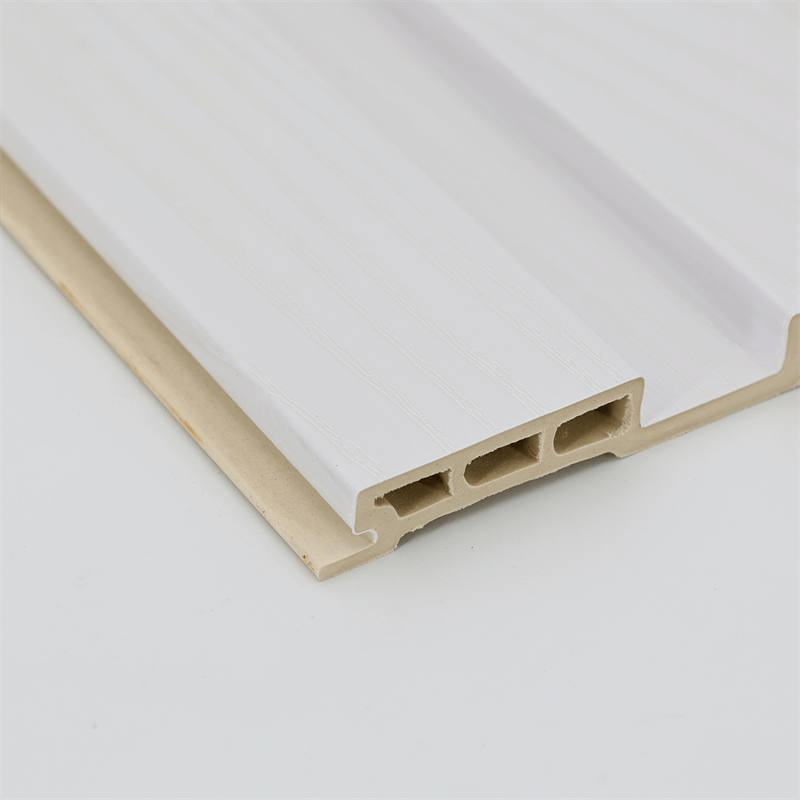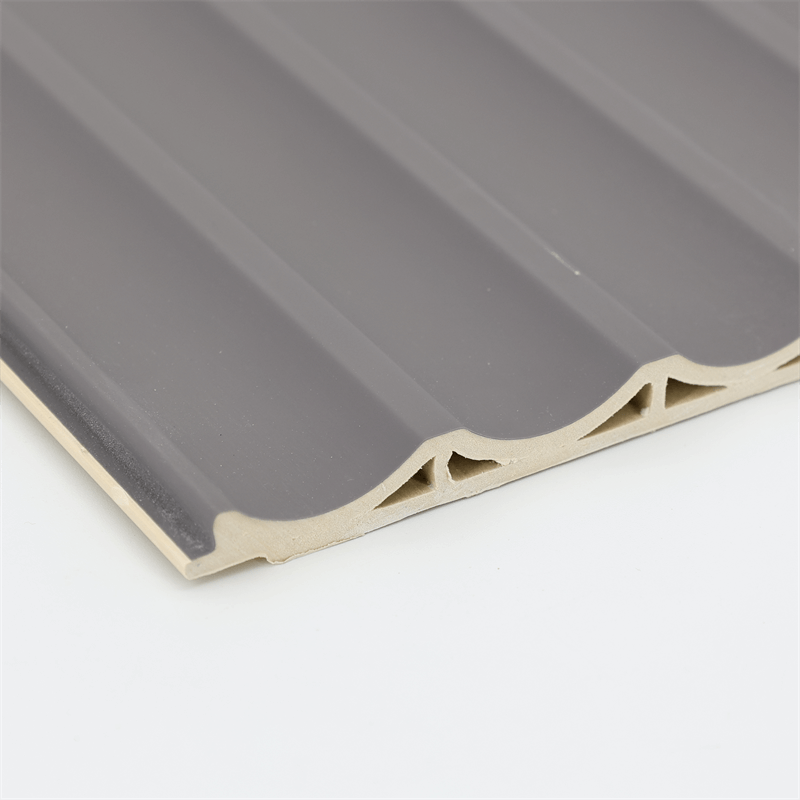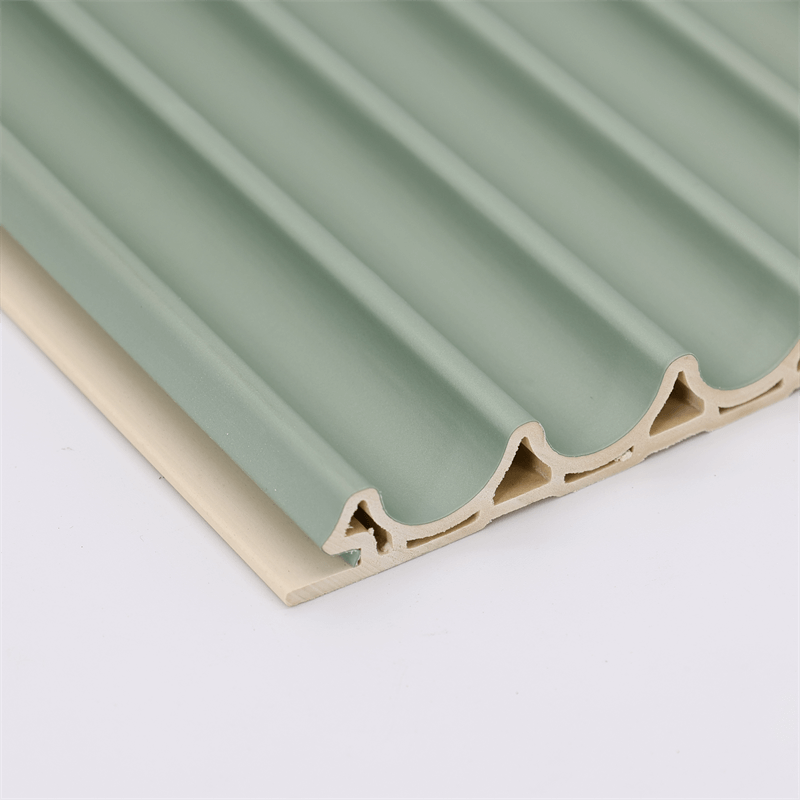In the realm of architectural design, the exterior of a building holds great significance as it is the first impression that visitors and passersby encounter.
Exterior wall materials play a crucial role in defining the aesthetics, durability, and overall performance of a structure.
This essay explores the use of WPC (Wood-Plastic Composite) wall panels in exterior applications, highlighting their strength, durability, and inherent beauty.
By examining their characteristics, installation process, weather resistance, and design versatility,
we can gain a comprehensive understanding of the advantages offered by WPC wall panels in enhancing the exteriors of buildings.
I. Characteristics of WPC Wall Panels:
- Composition: WPC wall panels are typically composed of a blend of wood fibers and thermoplastic polymers, resulting in a material that combines the natural aesthetics of wood with the strength and versatility of plastic. This composition provides a unique balance of durability, dimensional stability, and visual appeal.
- Structural Strength: WPC wall panels exhibit exceptional structural strength, enabling them to withstand the rigors of exterior applications. The combination of wood fibers and polymers creates a material that can handle external forces, such as wind loads or impact, ensuring the long-term stability and integrity of the panels.
II. Installation Process and Ease of Maintenance:
- Installation: The installation process of WPC wall panels in exterior applications is straightforward and efficient. These panels are designed with interlocking systems or hidden fasteners, allowing for seamless installation without visible screws or nails. This not only enhances the aesthetics but also simplifies the installation process, saving time and labor costs.
- Low Maintenance: WPC wall panels require minimal maintenance in exterior applications. They are resistant to rot, decay, and insect damage, eliminating the need for regular painting, sealing, or staining. Periodic cleaning with mild soap and water is typically sufficient to maintain their appearance, making them a practical and cost-effective choice for exterior wall cladding.
III. Weather Resistance:
- Moisture Resistance: WPC wall panels possess inherent moisture resistance due to the composition of wood fibers and thermoplastic polymers. This resistance prevents water absorption, minimizing the risk of swelling, warping, or decay. Additionally, the moisture resistance ensures the longevity and stability of the panels, even in humid or wet climates.
- UV Resistance: WPC wall panels are designed to withstand prolonged exposure to sunlight without significant fading or discoloration. They are often manufactured with UV stabilizers, protecting them from the damaging effects of ultraviolet rays. This UV resistance ensures that the panels retain their original color and appearance over time, contributing to the overall aesthetic appeal of the building’s exterior.
IV. Design Versatility and Aesthetic Appeal:
- Design Flexibility: WPC wall panels offer a wide range of design possibilities for exterior applications. They can be manufactured in various colors, finishes, and textures, allowing architects and designers to achieve their desired aesthetic vision. The panels can also be customized in terms of size and shape, accommodating unique architectural designs and creating visually striking facades.
- Natural Aesthetics: The combination of wood fibers and thermoplastic polymers in WPC wall panels provides a natural and warm aesthetic that can enhance the beauty of the building’s exterior. The panels can mimic the appearance of wood while offering the advantages of durability and longevity associated with plastic-based materials.
WPC wall panels offer numerous advantages in exterior applications, combining strength, durability, and beauty to enhance the overall performance and aesthetics of buildings.
Their composition of wood fibers and thermoplastic polymers provides structural strength, while their inherent moisture and UV resistance ensures long-term durability and visual appeal.
The ease of installation and low maintenance requirements of WPC wall panels make them a practical choice for exterior wall cladding.
Their resistance to moisture, rot, decay, and insect damage reduces the need for frequent repairs or replacements, saving both time and costs.
Furthermore, the design versatility of WPC wall panels allows for creative freedom in architectural designs, enabling architects and designers to achieve unique and visually striking exteriors.
The natural aesthetics of the panels, combined with their durability, make them an attractive option for enhancing the beauty and longevity of buildings.
In summary, WPC wall panels offer a compelling solution for exterior applications, providing strength, durability, and aesthetic appeal.
Their ability to withstand various weather conditions, low maintenance requirements, and design versatility make them a preferred choice for architects, builders, and homeowners seeking to create visually appealing and long-lasting exteriors.
By incorporating WPC wall panels, buildings can achieve a harmonious blend of strength, durability, and beauty that stands the test of time.

In conclusion, WPC wall panels offer a compelling solution for exterior applications, providing a perfect combination of strength, durability, and beauty.
With their composition of wood fibers and thermoplastic polymers, these panels exhibit exceptional structural strength, ensuring the long-term stability and integrity of the building’s exterior.
The interlocking systems or hidden fasteners used in their installation process simplify the installation and contribute to a seamless and visually appealing finish.
The inherent moisture resistance of WPC wall panels protects them from water absorption, preventing issues such as swelling, warping, or decay.
This moisture resistance, coupled with their UV resistance, allows the panels to maintain their original appearance, color, and dimensional stability even in harsh weather conditions.
The ability to withstand prolonged exposure to sunlight without significant fading or discoloration ensures that the building’s exterior retains its aesthetic appeal for years to come.
Additionally, the design versatility of WPC wall panels opens up a wide range of possibilities for architects and designers.
The panels can be manufactured in various colors, finishes, and textures, allowing for creative expression and the realization of unique architectural visions.
Whether aiming for a natural wood look or a more contemporary aesthetic, WPC wall panels offer the flexibility to achieve the desired design while providing the benefits of durability and low maintenance.
By choosing WPC wall panels for exterior applications, architects, builders, and homeowners can create buildings that not only stand the test of time but also make a lasting impression.
The strength, durability, and aesthetic appeal of WPC wall panels contribute to the overall performance and visual impact of the building’s exterior.
With their ability to withstand the elements and maintain their beauty, WPC wall panels offer a cost-effective and sustainable solution for enhancing the exteriors of various structures.
In conclusion, WPC wall panels offer an excellent combination of strength, durability, and beauty, making them a reliable choice for exterior applications.
Whether used in residential or commercial projects, these panels provide an attractive and long-lasting solution that can withstand the challenges of the outdoor environment.
By incorporating WPC wall panels, buildings can achieve a balance between functionality and aesthetics, resulting in visually appealing exteriors that stand strong for years to come.


